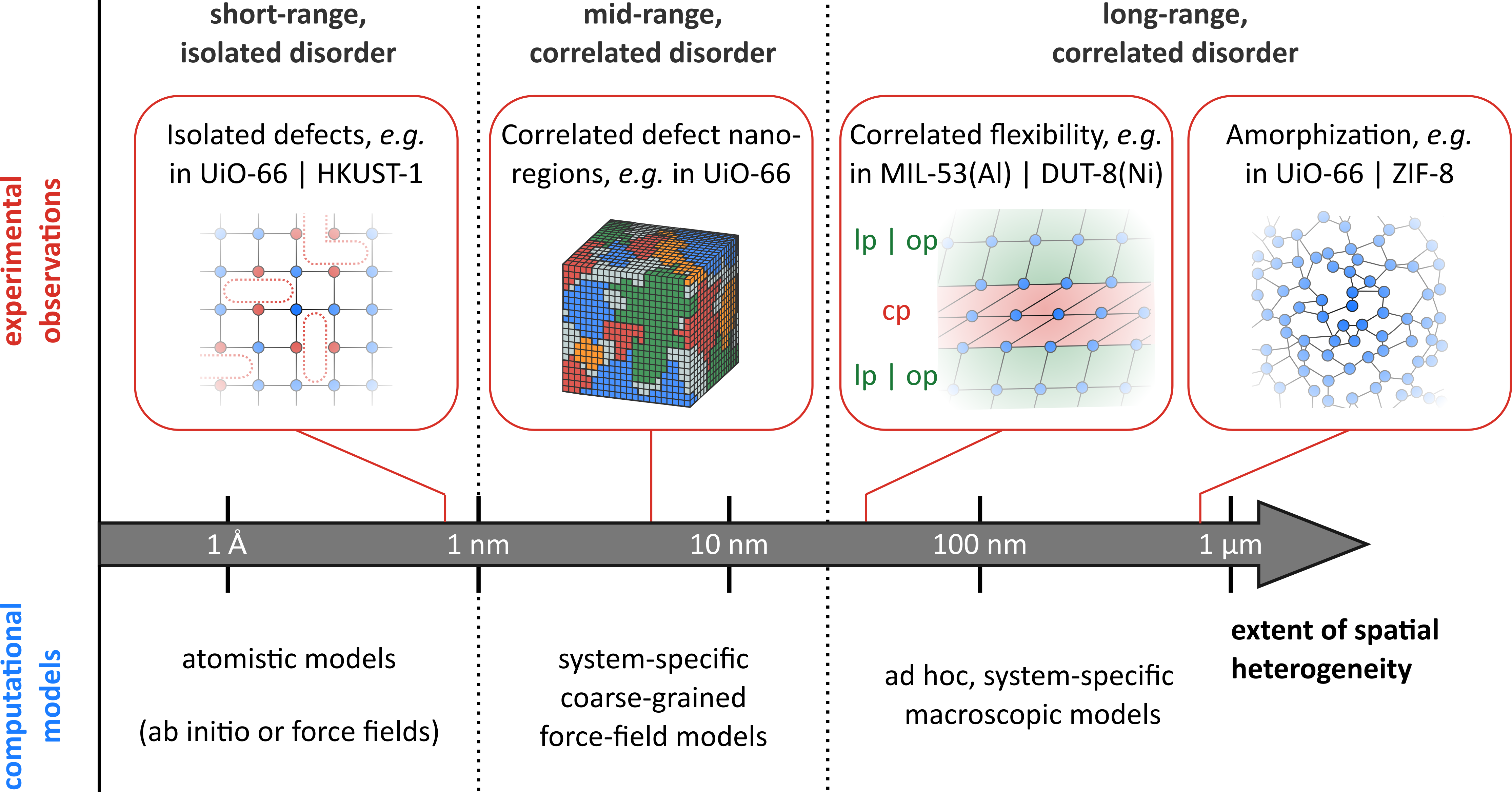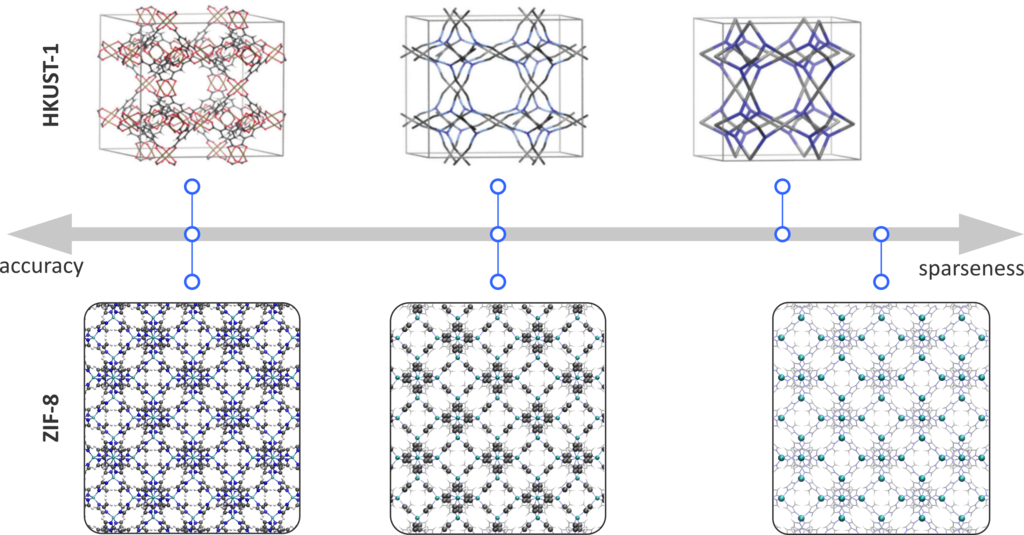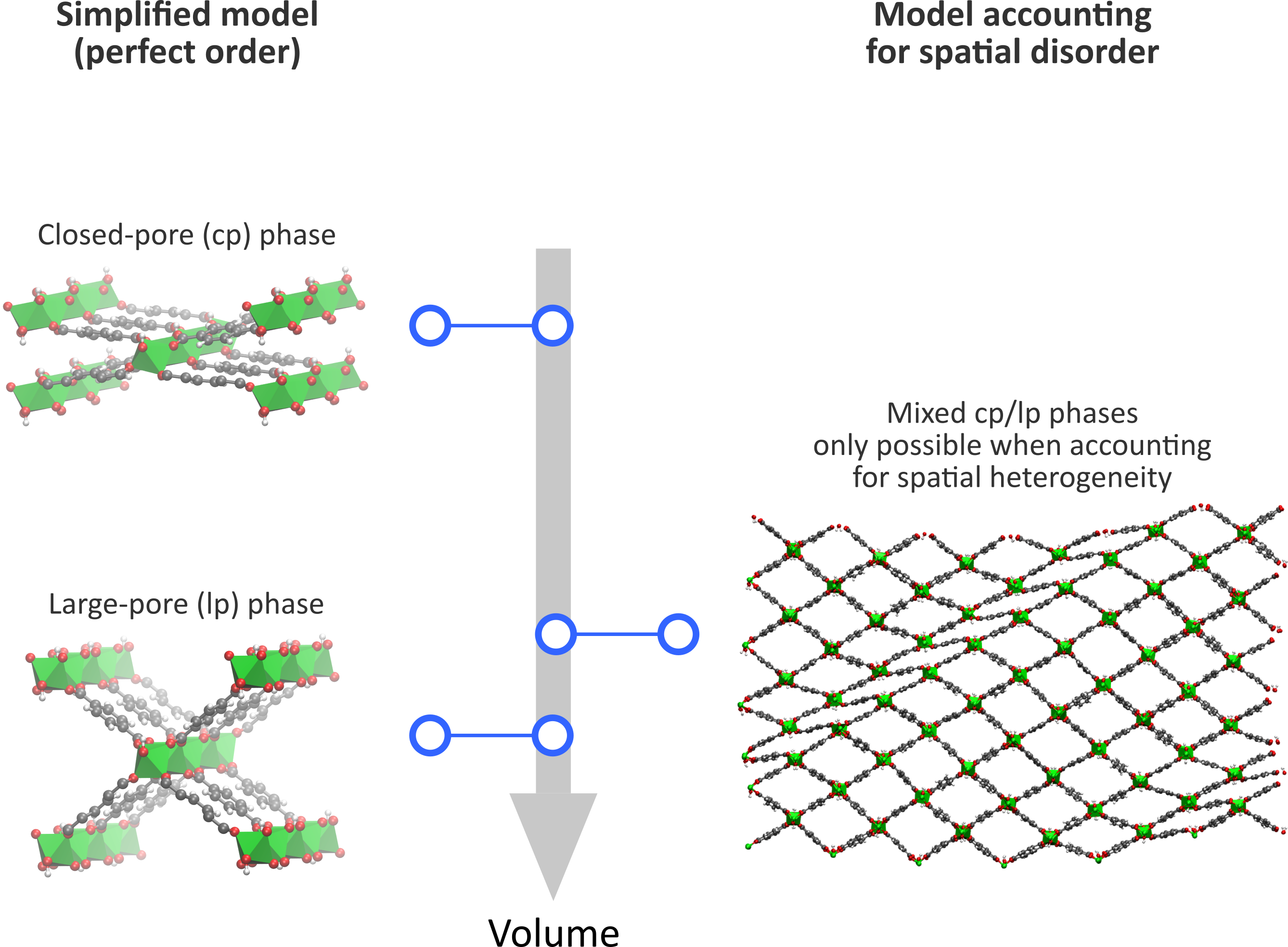Investigating the impact of long-range spatial disorder on the stability of flexible and defective metal-organic frameworks with coarse-grained models
Investigating the impact of long-range spatial disorder on the stability of flexible and defective metal-organic frameworks with coarse-grained models
Promotor(en): V. Van Speybroeck /19NANO05 / Nanoporous materialsRecent advances in computational techniques and the growing access to high-performance computing facilities have guided computationally-aided material design into a promising new era with seemingly unlimited possibilities. As a result, dedicated computer models now allow for the prediction of the performance of hypothetical materials in a fraction of the time necessary for their actual synthesis. The Center for Molecular Modeling (CMM) especially focuses on the molecular-level characterization of nanoporous materials such as metal-organic frameworks (MOFs). These scaffold-like materials, composed of inorganic joints connected through organic spokes, combine a structural nanoporosity with attractive properties that are not commonly found in more conventional materials. As a result, MOFs have been proposed for a wide variety of applications, from energy storage and conversion, over nanosensors, to biomedical applications. Moreover, the hybrid nature of MOFs makes them ideally suited to systematically engineer their organic and inorganic building blocks, giving rise to a vast potential to design MOFs for targeted applications. This potential can be tapped most efficiently by computationally predicting the best performing combinations of building blocks in a reliable and accurate way, guiding experimentalists towards a smaller set of materials to be synthesized.

Recently, the CMM has identified three grand challenges in the computational modelling of nanoporous materials. One of these crucial challenges is the development of models capable of accurately modeling different types of spatial disorder in these materials. While MOFs were originally envisioned to be perfectly ordered, crystalline materials, there has grown a recent awareness that this picture is too simplified, as MOFs harbor different types of spatial disorder that were previously ignored, as shown in Figure 1. To accurately predict the performance of MOFs, it is therefore vital to properly account for this disorder, which can occur on length scales up to a few hundreds of nanometers – far beyond what can be accurately tackled today with molecular-level models. To this end, so-called coarse-graining models need to be developed and benchmarked. Compared to current molecular-level models, coarse-graining techniques collect neighboring atoms into coarse-grained beads. As a result, the number of particles that need to be considered decreases (increased sparseness), and larger systems can be modelled. However, as indicated in Figure 2 for two prototypical MOFs, HKUST-1 and ZIF-8, coarse-graining techniques need to find a balance between accuracy and sparseness of the representation. An approach based on the variational minimization of the ‘difference’ between the free energies of the original and the sparse representation was recently introduced by two groups, leading to the ‘best’ representation given a threshold on the number of interaction terms in the model [1, 2]. However, it is yet unclear how this approach performs to describe the challenging class of MOFs.

.Recently, we implemented at the CMM a coarse-graining method based on this variational minimization of the Kullback-Leibler divergence, an alternative and widely-used technique, which has however not yet been systematically adopted for MOFs. In this thesis, it is the intention to thoroughly benchmark the performance of this newly developed technique for the accurate description of the thermal and mechanical phenomena of MOFs. Given the surprising flexibility in these porous solids, they form the ideal case study to test the applicability and limits of coarse-graining, and investigate the trade-off between accuracy and sparseness.
The thesis will focus on two materials. At first instance, the rigid HKUST-1 (top row in Figure 2) will be considered. For this material, an alternative coarse-grained model, which can be adopted for benchmarking purposes, was recently developed by prof. Rochus Schmid, with whom we collaborate [3]. Besides investigating the perfect material, we will also explore the effect of intrinsic mesopores in the material on its mechanical properties. Given the spatial extent of these mesopores, an accurate coarse-grained model for this material is essential to obtain reliable information on their influence on the macroscopic properties of the material [4]. Second, our study will focus on MIL-53(Al), a prototypical flexible MOF. When treated as a perfectly ordered material, this MOF exhibits two (meta)stable phases, as indicated in the left part of Figure 3. Transitions between these two (meta)stable states can be triggered by external stimuli such as temperature, pressure, and guest adsorption. However, when allowing for spatial disorder in the material, mixed phases may occur, as indicated in the right pane of Figure 3, which are thermodynamically more stable. In this thesis, we will investigate to which extent MIL-53(Al) can be coarse-grained while still describing well the critical pressure necessary to induce a phase transition and the coexistence of multiple phases. A coarse-grained model that accurately captures these phenomena would be an enormous step forward to systematically study the phenomenon of phase transitions in flexible metal-organic frameworks and tackle the challenge posed by spatial disorder.

The student will be actively coached to make him/her acquainted with the several advanced simulation and coarse-graining techniques early in the thesis year, and to transfer necessary programming skills needed to perform the research. A strong interest in programming is, however, a prerequisite.
Aspects
Master of Science in Engineering Physics: This thesis subject is closely related to the following clusters of elective courses: NANO and MODELING. Physics aspect: derivation of a coarse grained model, starting from interactions on a molecular level; Engineering aspect: exploration of the effect of mesopores and flexibility on the macroscopic properties of the materials.
- Study programmeMaster of Science in Engineering Physics [EMPHYS], Master of Science in Physics and Astronomy [CMFYST]ClustersFor Engineering Physics students, this thesis is closely related to the cluster(s) NANO, MODELLINGKeywordsCoarse graining, force field, Molecular simulation, Nanoporous materials, Flexibility, mesoporesReferences
[1] I. Bilionis and P. S. Koutsourelakis, "Free energy computations by minimization of Kullback-Leibler divergence: An efficient adaptive biasing potential method for sparse representations," J. Comput. Phys., vol. 231, no. 9, pp. 3849-3870, 2012.
[2] O. Valsson and M. Parrinello, "Variational approach to enhanced sampling and free energy calculations," Phys. Rev. Lett., vol. 113, no. 9, p. 090601, 2014.
[3] J. P. Dürholt, R. Galvelis and R. Schmid, "Coarse graining of force fields for metal-organic frameworks," Dalton Trans., vol. 45, no. 10, pp. 4370-4379, 2016.
[4] J. P. Dürholt, J. Keupp and R. Schmid, "The Impact of Mesopores on the Mechanical Stability of HKUST-1: A Multiscale Investigation," Eur. J. Inorg. Chem., vol. 2016, no. 27, pp. 4517-4523, 2016.
